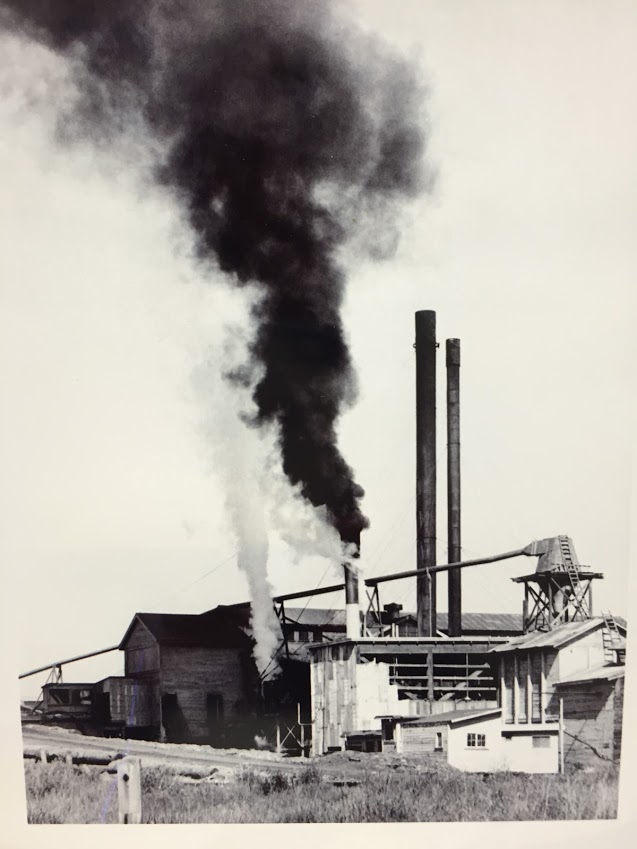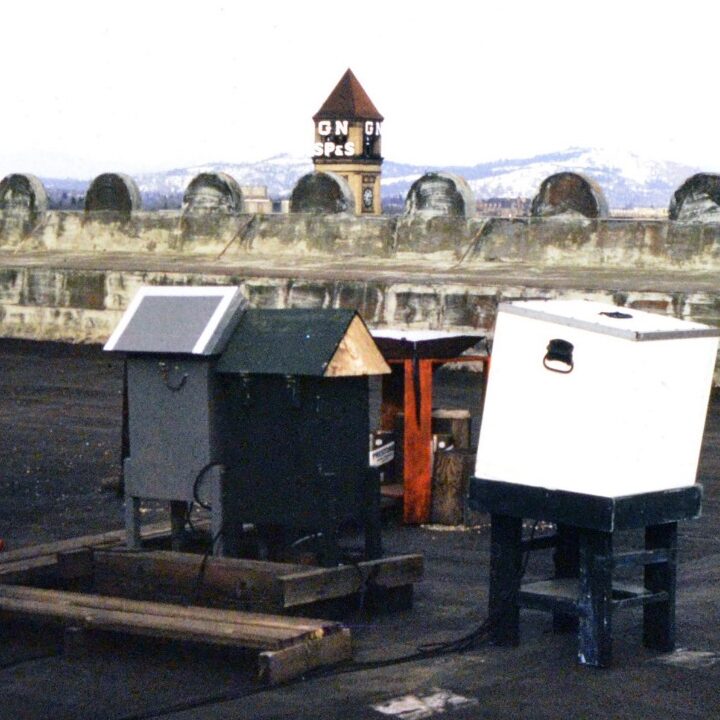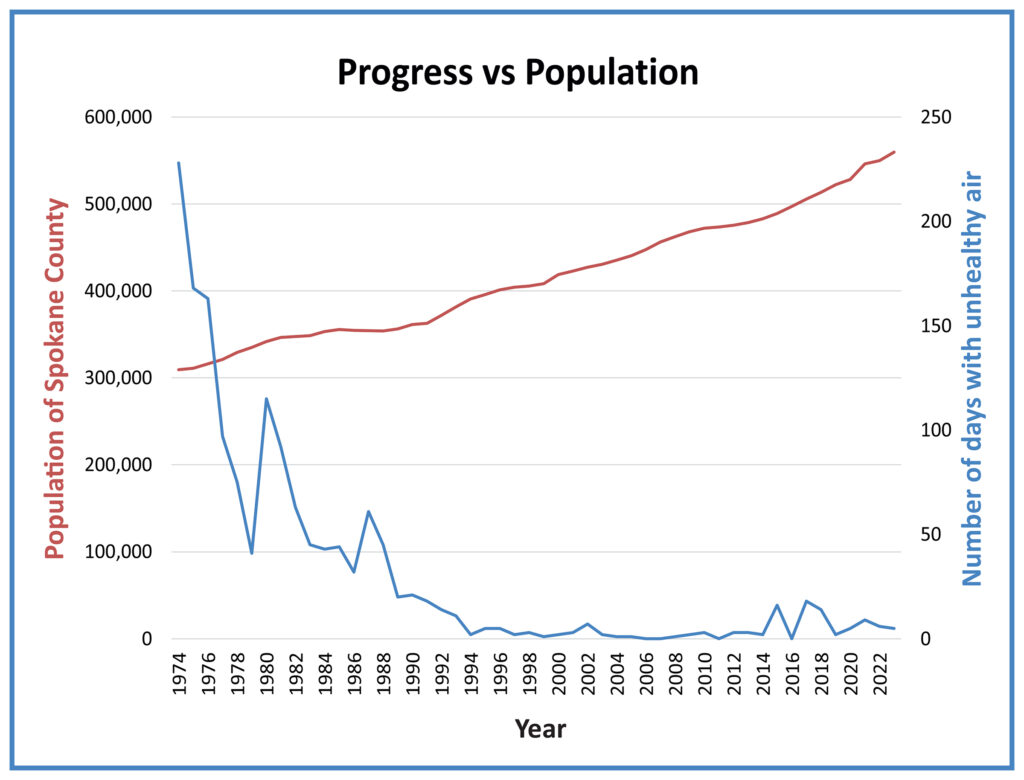
Smokestacks, like these pictured above, were the focus of our early efforts to combat air pollution in Spokane County.

We’ve come a long way…
In 1969, several years before the U.S. Environmental Protection Agency was created, we began our work as the Spokane County Air Pollution Control Authority.
With a handful of staff, our initial focus was setting up air sampling stations. Air sampling back then was real high tech: fallout buckets and sticky-taped jars. Staff also began establishing an air monitoring network, starting with high volume total suspended particulate (TSP) samplers, see photo on bottom left.
Our early efforts focused on addressing the obvious sources of air pollution–industrial smokestacks belching thick, black smoke. Staff contacted industrial and commercial operations to learn about their processes, products, and equipment in order to estimate their emissions.
A lot has happened since we began our work in 1969. The Spokane metro area, once plagued by poor air quality during the majority of the year, has been in compliance with federal clean air standards since the late 1990s. Over the last decade, our air quality has suffered due to wildfire smoke. Smoke from wildfires had resulted in unhealthy concentrations of fine particle pollution (PM2.5). Learn more about wildfire smoke impacts here.
While our name has changed from the air pollution control authority to the regional clean air agency, our mission remains intact, to “preserve, enhance and protect Spokane County’s air resource for current and future generations.”
Air quality improvements
When we began our work in 1969, Spokane County was home to roughly 287,500 residents. Fifty-five years later, our population is close to 550,000 residents. Given this growth in population, the improvements made to our air quality are quite remarkable.
The “Progress vs Population” chart below illustrates Spokane County’s air quality success story.
We experienced signficant improvements in our air quality while population (and thus businesses and vehicles) continued to expand. Air quality improvements during the 1970s and 1980s can be largely credited to the advancements in engine technology, industrial pollution control technologies, and the phase-out of leaded gasoline.
It’s important to note that over these five decades, especially in the 1970s and 80s, the number and location of air monitoring locations changed frequently, as did the technological advances in air pollution measurements.
*Monthly air quality data reports for the last several years are here.


